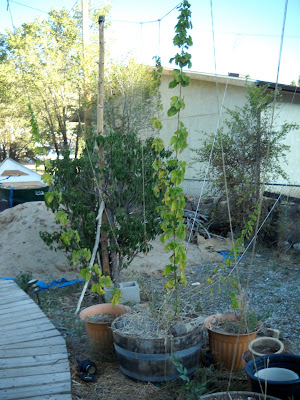
Leek transplants and their wet life-line
So last year I experimented with planting my first leeks, rather unsuccessfully I might add (planted too deep, in too heavy clay, and way too late (june) in the year). Despite disappointing leeks that were still no larger than a over-size scallion in October, I'm trying again. That's where it gets interesting, I couldn't stop at just a few pots of young leek sprouts when I saw them at Home Depot last Sunday and I ended up buying 6 pots ($3 something each), enough to transplant two 25' rows with around 160 leeks. This year I planted them in a deep trench filled with very rich and well-amended topsoil (lots of composted manure and peat moss). 
Trimming the roots back
After removing the peat pot and soil they come in, I cut the tangled mass of roots back to less than an inch, and separated each of the 20+ transplants. After wetting in the soil, I planted each leek by poking a 3" deep hole with a stick and then carefully inserting the plant. A staggered planting grid kept each transplant about 6" from it's neighbor. Books and websites say that trimming the roots and leaves back is the traditional European method, but optional. I found that both are necessary. The leeks with trimmed roots (before trimming they're 5-7" long) are much easier to insert into the planting holes, and the uncut long leaves get blown around in our spring winds much more after planting--inviting stress--than the transplants with leaves trimmed to 3-4" above the ground.































